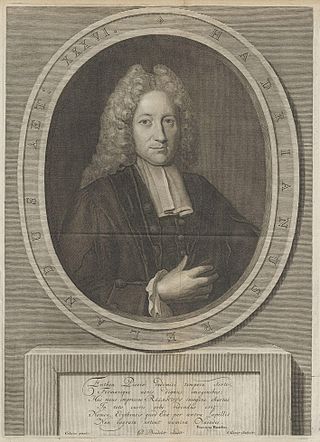
The Batavi were an ancient Germanic tribe that lived around the modern Dutch Rhine delta in the area that the Romans called Batavia, from the second half of the first century BC to the third century AD. The name is also applied to several military units employed by the Romans that were originally raised among the Batavi. The tribal name, probably a derivation from batawjō, may refer to the fertile Betuwe, a region today known as the fruitbasket of the Netherlands.

Nijmegen is the largest city in the Dutch province of Gelderland and the tenth largest of the Netherlands as a whole. Located on the Waal River close to the German border, Nijmegen is one of the oldest cities in the Netherlands and the first to be recognized as such in Roman times. In 2005, it celebrated 2,000 years of existence.
August Wilhelm Zumpt was a German classical scholar, known chiefly in connection with Latin epigraphy. He was a nephew of philologist Karl Gottlob Zumpt.

The gens Petronia was a plebeian family at ancient Rome. This gens claimed an ancient lineage, as a Petronius Sabinus is mentioned in the time of Lucius Tarquinius Superbus, the last of the Roman kings, but few Petronii are mentioned in the time of the Republic. They are frequently encountered under the Empire, holding numerous consulships, and eventually obtaining the Empire itself during the brief reign of Petronius Maximus in AD 455.

Johann Albert Fabricius was a German classical scholar and bibliographer.

Raphael Fabretti was an Italian antiquarian.

Jean-Jacques Boissard was an antiquary and Neo-Latin poet.

Johannes Clauberg was a German theologian and philosopher. Clauberg was the founding Rector of the first University of Duisburg, where he taught from 1655 to 1665. He is known as a "scholastic cartesian".

Johannes Meursius was a Dutch classical scholar and antiquary.

John Jonston or Johnston was a Polish scholar and physician, descended from Scottish nobility and closely associated with the Polish magnate Leszczyński family. The standard author abbreviation Jonst. is used to indicate this person as the author when citing a botanical name.

Willem ten Rhijne was a Dutch doctor and botanist who was employed by the Dutch East India Company in 1673. In summer 1674 he was dispatched to the trading post Dejima in Japan. While giving medical instructions and taking care of high-ranking Japanese patients, ten Rhijne collected materials on Japanese medicine, especially on acupuncture and moxibustion.

Johann(es) Petreius was a German printer in Nuremberg.
In Greek mythology, Pallas was an Arcadian prince and the eponymous founder of the Arcadian town of Pallantion. He was the teacher of Athena, who, according to local myths, was born in Aliphera.

Johan Isaaksz Pontanus was a Dutch historiographer.

John Colgan, OFM, was an Irish Franciscan friar noted as a hagiographer and historian.

Adriaan Reland was a noted Dutch Orientalist scholar, cartographer and philologist. Even though he never left the Netherlands, he made significant contributions to Middle Eastern and Asian linguistics and cartography, including Persia, Japan and Palestine during the biblical ages.
The Smetius Collection was a 17th-century collection of Roman provincial antiquities around the Dutch city of Nijmegen. Put together by Johannes Smetius (1591–1651) and his son Johannes Smetius Junior (1636–1704), both clergy at Nijmegen, the collection was instrumental in settling the debate about the exact location of the Batavians.

Aubert le Mire, Latinized Aubertus Miraeus was an ecclesiastical historian in the Spanish Netherlands.

Theatrum Chemicum is a compendium of early alchemical writings published in six volumes over the course of six decades. The first three volumes were published in 1602, while the final sixth volume was published in its entirety in 1661. Theatrum Chemicum remains the most comprehensive collective work on the subject of alchemy ever published in the Western world.

Antiquitates rerum humanarum et divinarum was one of the chief works of Marcus Terentius Varro . The work has been lost, but having been substantially quoted by Augustine in his De Civitate Dei its contents can be reconstructed in parts. To a lesser extent, quotes from the work have also been transmitted by other authors, including Pliny, Gellius, Censorinus, Servius, Nonius, Macrobius, Priscian etc..


















